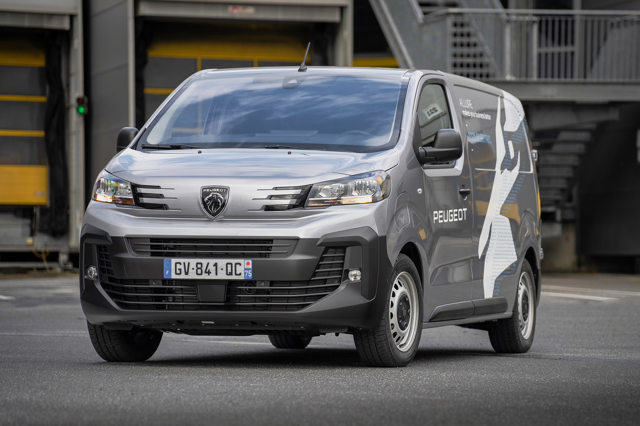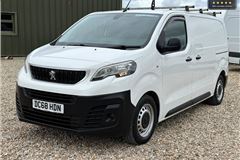Peugeot e-Expert Review 2024
Peugeot e-Expert At A Glance
Peugeot’s previous e-Partner was one of the best electric vans on the market, as the smallest of three plug-in models in the company’s LCV portfolio. Now with a bigger battery, improved range and some styling tweaks, along with some cabin improvements, it’s better than ever – but does it suit your needs? Read our Peugeot e-Partner review to find out…
Sharing its bodywork, electric motor and battery technology with the Vauxhall Combo Electric, Citroen e-Berlingo and Fiat e-Doblo, the latest model benefits from a 20% increase in range over the previous model - up from 171 miles to 205 miles (WLTP mixed cycle).
A proportion of that increase is down to a new regenerative braking system, which can be activated at three different regeneration levels using steering wheel-mounted buttons, while the 52kWh battery pack offers further capacity than the old model did.
The latest Peugeot e-Partner is also offered with CCS rapid charging at a maximum speed of 100kW - twice that of its predecessor, allowing a 0-80% charge in around 30 minutes on a 100kW charger. The onboard charger, meanwhile, is a 7kW unit compatible with most home sockets, while a three-phase compatible 11kW charger is offered an option. Another extremely useful feature is the Peugeot e-Partner’s EPTO, or Electric Power Take Off, which allows the drive battery to be used to power tools or equipment from a socket in the van.
There are two body lengths available in the UK market – L1 and L2, the latter of which is also offered as a crew cab with flat-folding seats and a pop-up bulkhead to increase load spacec when they’re not in use.
It’s a tidy and neatly styled van with a choice of body lengths known as L1 and L2 (4.4 or 4.7 metres).
Two trim levels are offered – the business-like Professional and the more driver-focused Asphalt, which gets improved interior trim and body-coloured bumpers.
All models are offered with the option of Peugeot’s ‘Multi-flex’ modular folding three-seater front bench, which allows greater storage capacity inside the cabin, using storage space under the centre seat cushion and a load through bulkhead.
Styling changes include an all-new front end that’s more distinctively different from its sister models, with a Peugeot ‘shield’ logo at its centre. The headlights feature a three-claw design echoing the Peugeot ‘Lion’ emblem, with LED lamps on the higher Asphalt model.
All versions now come with a smartphone station with DAB radio, Bluetooth and two USB connections, with inductive charging. The Asphalt also get Peugeot’s full digital “i-Cockpit”, a standout from its sister vans.
Safety equipment includes driver attention alert, advanced emergency braking with pedestrian and cyclist detection, cruise control and rear parking sensors, while the Asphalt gets Stellantis Group’s new Dynamic Surround View, which projects images from two cameras to a rear-view mirror.
Power comes from a 136PS electric motor with 270Nm of torque, and offers a lively driving experience. Peugeot also claims that the payload of 780kg and towable weight of 750kg are benchmarks in the segment, but they’re still quite a way behind diesel versions of the Peugeot Partner.










 Improved electric range, fast charge option, good value
Improved electric range, fast charge option, good value
 Limited body styles, rear visibility, less payload than diesels
Limited body styles, rear visibility, less payload than diesels


